
Thursday December 3, 2020
By Jessica Longbottom
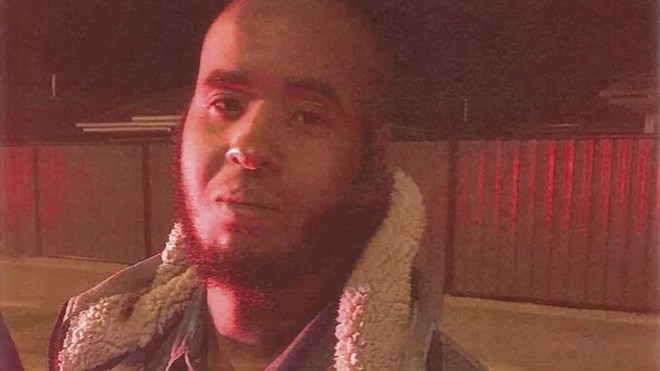
The court also released a previously unpublished image of Shire Ali, taken after he was caught speeding.(Supplied)
Papers about Islam and business cards for a pressure cleaning business were among dozens of items found by police in the burnt-out car of a man who stabbed three people in Melbourne's CBD two years ago, an inquest has heard.
Hassan Khalif Shire Ali, 30, was shot by police and later died in hospital after he set his ute on fire and attacked three people on Bourke Street in November 2018, killing cafe owner Sisto Malaspina.
The court heard evidence that a pile of papers with the headings "ISLAM THE WAY OF GOD" and "KUFR OF INTER-FAITH" were found in the passenger footwell of the car.
In the back of the car, three LPG bottles, a Kenyan licence, an expired passport and business cards saying "UNDER PRESSURE … XASAN SHIRE … HIGH & SOFT Pressure Washing !! …" were also found.
Other items found included a knife, a letter from VicRoads, three mobile phones, plastic packaging from a sim card, and a bag with clothing, deodorant and personal hygiene items.
In the tray of the vehicle were items including ropes, a car wheel, and some corn and pita bread.
Forensics expert Laura Noonan, who examined the burnt vehicle, told the court there were also traces of petrol on the furnishings of the car, and it was likely the fire was started by a cigarette lighter.
She said while there were several small explosions in the car, the conditions never led to the propane bottles exploding.
"If you did get the mixture spot on [between oxygen and propane] it could potentially blow the doors and everything off," Ms Noonan told the court.
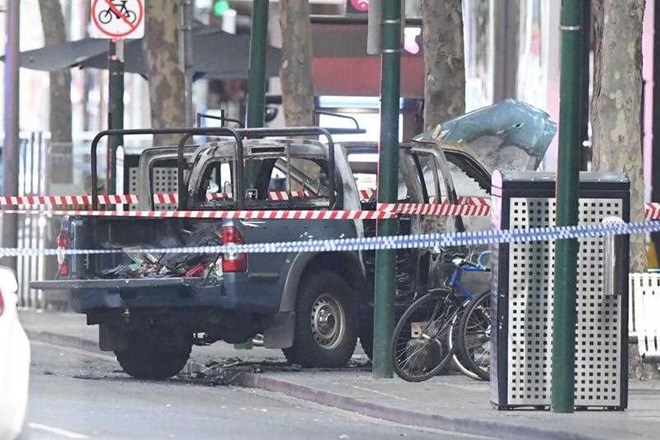
There were several small explosions in the car, however the propane bottles never exploded.(AAP: James Ross)
"But … because the explosive range is quite narrow and really difficult to get in that optimal range, the chances of that happening are pretty slim."
The court also released a photograph of Shire Ali taken one month before the attack, by a police officer who had booked him for speeding and driving an un-registered car.
He was clocked at 89 km/h on Aitken Boulevard, Craigieburn on October 12, 2018 by Leading Senior Constable Jason Bolitho, who described Shire Ali as "cooperative, polite and of good demeanour" in his witness statement.
He was arrested for a number of outstanding traffic warrants, but then bailed to attend court at a later date.
LSC Bolitho said in the police system, Shire Ali's name defaulted to the "master" name Mohamed Farah, which had a flag warning of a "National Security Risk", but there was no further information.
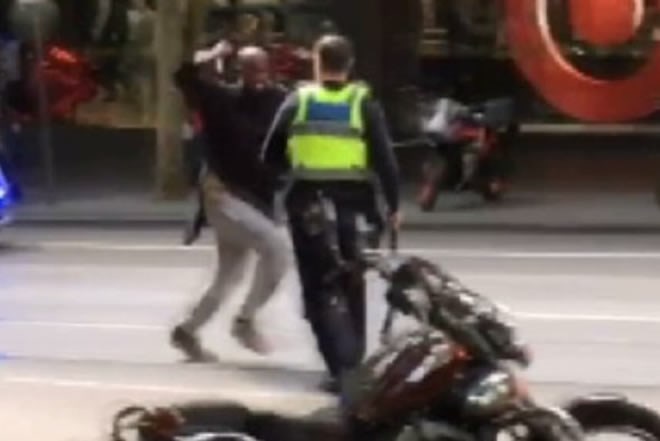
Police said it may not have been safe for officers to use a taser against Shire Ali.(ABC News)
Tasers may not have helped police, court hears
Earlier, Superintendent Peter Seiz, head of People Development Command at the Police Academy, told the court he believed all police members involved in the initial response had acted within their training.
Superintendent Seiz, who the court heard was the most qualified person within Victoria Police to talk about operational tactics and safety, said the first two responding uniformed officers had shown restraint in first using a baton and pepper spray, before one of them shot Shire Ali.
"They arrived, they were risk assessing … I believe they were trying to understand what had occurred … once the attack on the members took place they were on the back foot from initial contact to resolution," he said.
The two officers didn't have tasers, but Superintendent Seiz told the court he didn't expect they would have helped and may have placed the police in more danger.
"Just the variables that need to be considered. If the [taser] probes had missed, the advancing attacker could have hit one of the [police] members with that knife," he said.
Earlier, he told the court the effectiveness of tasers could be overstated.
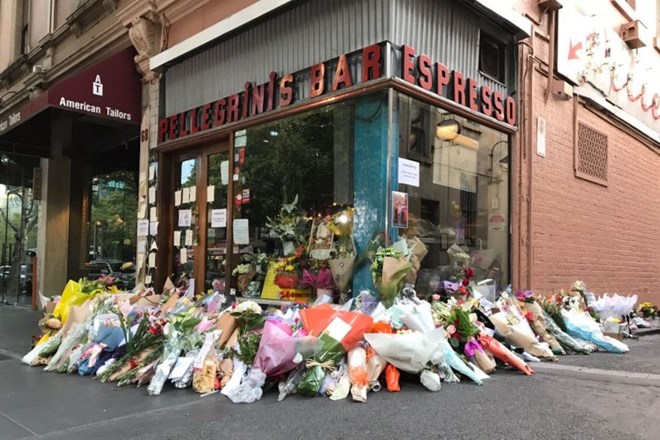
Pellegrini's Espresso Bar co-owner Sisto Malaspina was killed in the Bourke Street attack.(ABC News: James Hancock)
"If probes don't hit the target, if the charge doesn't circulate through muscles and so forth," he said.
On Wednesday morning, the three Critical Incident Response Team (CIRT) members who were the second responders on the scene also gave evidence about the limited effectiveness of tasers.
When they arrived, they said Shire Ali was on the ground and couldn't get up, but was still holding a knife.
They were unaware he'd been shot, but decided lethal force wasn't necessary. Instead, Senior Constable Adam Sekoa and Sergeant Jesse Mahoney deployed their tasers.
"I recall seeing the male on the ground … appearing to be affected by the taser. He was locking up, that is stiffing up his muscles and his limbs. But he didn't drop the knife," Sergeant Mahoney told the court.
He said it took another taser arc from Senior Constable Sekoa for Shire Ali to drop his weapon.
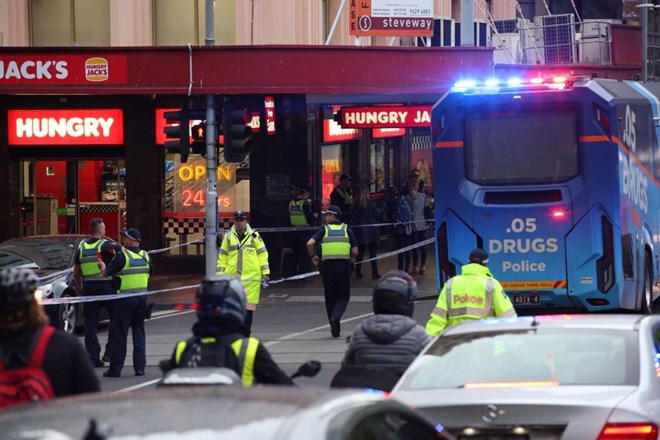
Second responders told the court they likely wouldn't have used a taser if they arrived on the scene first.(ABC News: Danielle Bonica)
Although the taser worked to disarm Shire Ali, all three men said they wouldn't have used a taser if they were first on the scene.
Senior Constable Longli Loei told the court tasers were effective when they hit the target, but hitting the target could be a "statistical anomaly" depending on factors like the distance from the target.
"It's a strike of luck as to whether the probes connect," he told the court.
Sergeant Mahoney said he would have used his firearm to disarm Shire Ali if he had arrived first, because he didn't have the same confidence in tasers, batons and pepper spray.
"Because if he's threatening my life or someone else's, I would want to make sure it works," he said.